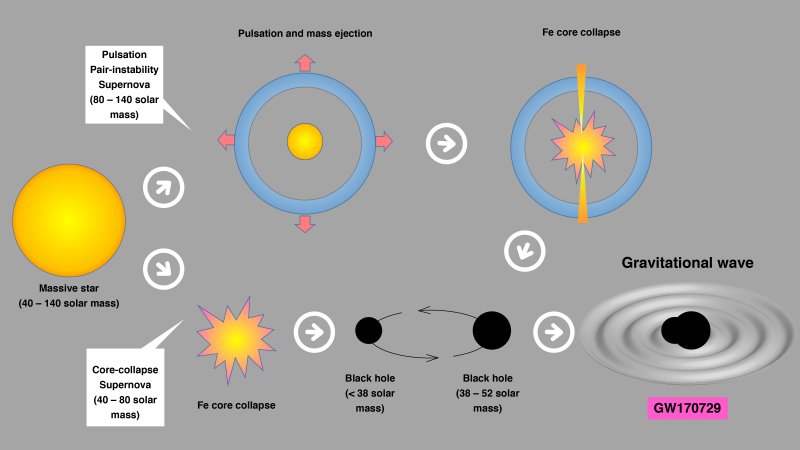IPMU: Origin and Maximum Mass of Massive Black Holes Found
Posted: Wed Jul 01, 2020 5:56 pm
Researchers Find the Origin and the Maximum Mass of Massive
Black Holes Observed by Gravitational Wave Detectors
Kavli Institute for the Physics and Mathematics of the Universe | 2020 Jul 01
Pulsational Pair-instability Supernovae. I. Pre-collapse Evolution and
Pulsational Mass Ejection ~ Shing-Chi Leung, Ken'ichi Nomoto, Sergei Blinnikov
Black Holes Observed by Gravitational Wave Detectors
Kavli Institute for the Physics and Mathematics of the Universe | 2020 Jul 01
Through simulations of a dying star, a team of theoretical physics researchers have found the evolutionary origin and the maximum mass of black holes which are discovered by the detection of gravitational waves.
The exciting detection of gravitational waves with LIGO (laser interferometer gravitational-wave observatory) and VIRGO (Virgo interferometric gravitational-wave antenna) have shown the presence of merging black holes in close binary systems.
The masses of the observed black holes before merging have been measured and turned out to have a much larger than previously expected mass of about 10 times the mass of the Sun (solar mass). In one of such event, GW170729, the observed mass of a black hole before merging is actually as large as about 50 solar masses. But it is not clear which star can form such a massive black hole, or what the maximum of black holes which will be observed by the gravitational wave detectors is.
To answer this question, a research team ... have investigated the final stage of the evolution of very massive stars, in particular 80 to 130 solar mass stars in close binary systems. ...
Pulsational Pair-instability Supernovae. I. Pre-collapse Evolution and
Pulsational Mass Ejection ~ Shing-Chi Leung, Ken'ichi Nomoto, Sergei Blinnikov
- Astrophysical Journal 887(1):72 (2019 Dec 10) DOI: 10.3847/1538-4357/ab4fe5
- arXiv.org > astro-ph > arXiv:1901.11136 > 30 Jan 2019 (v1), 29 Dec 2019 (v4)
